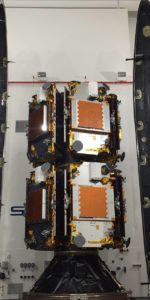
NASA has chosen two new missions to explore the Solar System; it was announced today during a media teleconference. The missions are part of NASA’s Discovery Program, and after the competing proposals had been narrowed down to five contenders, the final two winners were announced. Both missions, called Lucy and Psyche, will visit asteroids which have never been seen up close: multiple Trojan asteroids which share Jupiter’s orbit and the unusual metal asteroid 16 Psyche. These missions will study such objects which are relics left over from the early beginnings of the Solar System, providing new clues as to how the planets and other bodies formed. Two other mission proposals to return to Venus did not make the cut, unfortunately.
Lucy is scheduled to launch in October 2021 and will be the first spacecraft to visit the swarms of asteroids known as the Trojans. It is named after the famous human fossil Lucy, which has helped to further understand the history of human evolution. The Lucy mission will do the same for the origin and evolution of asteroids and other bodies in the Solar System.
“Lucy will visit a target-rich environment of Jupiter’s mysterious Trojan asteroids, while Psyche will study a unique metal asteroid that’s never been visited before,” said Thomas Zurbuchen, associate administrator for NASA’s Science Mission Directorate in Washington. “This is what Discovery Program missions are all about – boldly going to places we’ve never been to enable groundbreaking science.”
The Trojan asteroids share the same orbit as Jupiter, separate from the main asteroid belt between Jupiter and Mars, and are “trapped” in two large swarms by Jupiter’s gravity. One swarm leads Jupiter while the other trails behind the giant planet. While they now share Jupiter’s orbit, it is thought that they may have originated farther out in the Solar System, before migrating inward.
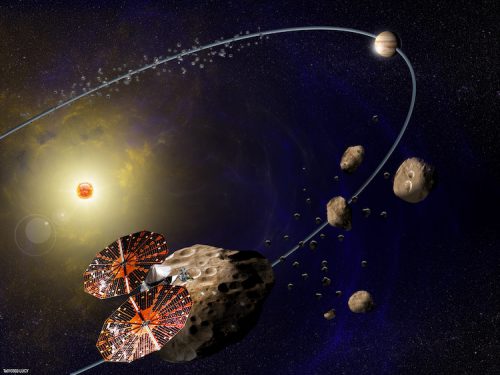
“This is a unique opportunity,” said Harold F. Levison, principal investigator of the Lucy mission from the Southwest Research Institute (SwRI) in Boulder, Colo. “Because the Trojans are remnants of the primordial material that formed the outer planets, they hold vital clues to deciphering the history of the Solar System. Lucy, like the human fossil for which it is named, will revolutionize the understanding of our origins.”
According to Dr. Catherine Olkin, the mission’s deputy principal investigator from SwRI, “Understanding the causes of the differences between the Trojans will provide unique and critical knowledge of planetary origins, the source of volatiles and organics on the terrestrial planets, and the evolution of the planetary system as a whole.”
The Lucy spacecraft will actually reach the main asteroid belt first, in 2025, with a flyby of asteroid DonaldJohanson. Later, it will begin to explore six of the Trojan asteroids from 2027 to 2033, including one binary asteroid, Patroclus and Menoetius. Lucy also shares some technology and personnel from the New Horizons mission to Pluto and the OSIRIS-REx mission to asteroid Bennu. The spacecraft will carry two newer versions of the RALPH and LORRI science instruments which were used on New Horizons and and the OTES instrument on OSIRIS-REx. The Lucy mission will also include several veteran team members from New Horizons and several members of the OSIRIS-REx team. Lucy will be an excellent example of cross-collaboration between different missions and how they can work together despite being sent to different and widely separated regions of the Solar System.
As noted in the new paper presented at the 47th Lunar and Planetary Science Conference (2016):
“The Lucy mission is the first reconnaissance of the Jupiter Trojan asteroids – objects that hold vital clues to deciphering the history of the Solar System. Due to an unusual and fortuitous orbital configuration, Lucy, which has been selected for further development as part of NASA’s Discovery Program, will perform an exhaustive landmark investigation that visits six of these primitive asteroids, covering both the L4 and L5 swarms, all the known taxonomic types, and a nearly equal mass binary. It will use a suite of high-heritage remote sensing instruments to map the geology, surface color and composition, thermal and other physical properties of its targets at close range – all this within constraints of the Discovery Program. Thus, Lucy, like the human fossil for which it is named, will revolutionize the understanding of our origins.”
Major objectives of the Lucy mission include:
Surface composition
Lucy will map the color, composition, and regolith properties of the surface and determine the distribution of minerals, ices, and organics species.
Surface geology
Lucy will map albedo, shape, crater spatial, and size distributions, determine the nature of crustal structure and layering, and determine the relative ages of surface units.
Interior and bulk properties
Lucy will determine the masses and densities, and study subsurface composition via crater windows, fractures, ejecta blankets, and exposed bedding.
Satellite and ring search
Lucy will determine the number, size-frequency distribution, and location of km-scale satellites and dense rings.
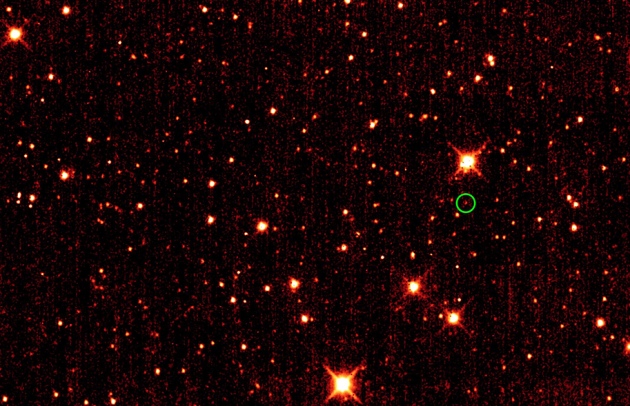

Lucy will be designed, built, and operated by Lockheed Martin and led by Principal Investigator Dr. Harold Levison of SwRI.
“This is a thrilling mission as the Jupiter Trojan asteroids have never been studied up close,” said Guy Beutelschies, director of Interplanetary Systems at Lockheed Martin Space Systems. “The design of the spacecraft draws from the flight-proven OSIRIS-REx spacecraft currently on its way to a near-Earth asteroid. This heritage of spacecraft and mission operations brings known performance, reliability and cost to the mission.”
“This is a unique opportunity,” said Dr. Levison. “Because the Trojans are remnants of the primordial material that formed the outer planets, they hold vital clues to deciphering the history of the solar system. Lucy, like the human fossil for which it is named, will revolutionize the understanding of our origins.”
Lockheed Martin has participated in six other Discovery Program missions before Lucy. It has developed the Lunar Prospector spacecraft, developed the aeroshell entry system for Mars Pathfinder, developed and operated the spacecraft for both Stardust missions, developed and operated the Genesis spacecraft, developed and operated the two GRAIL spacecraft, and developed and will operate the InSight Mars lander which is set to launch in May 2018.
Psyche, meanwhile, will be sent to explore something never seen before: a metal asteroid. Rocky asteroids including Eros and Ceres have been visited already, but this will be the first time such an unusual metallic object has been studied up close. The asteroid 16 Psyche is about 130 miles (210 kilometers) in diameter and is thought to be composed of metallic iron and nickel, unlike most asteroids which are rock or ice. Unlike the Trojans, 16 Psyche orbits the Sun between Mars and Jupiter. Being metal, however, doesn’t mean it’s anything like the Death Star in Star Wars; rather, scientists think it could be the exposed core of a former planet (a protoplanet) which lost its rocky outer layers due to violent impacts when the Solar System was still forming. What is known about it so far suggests that it is similar to Earth’s metallic core.
“This is an opportunity to explore a new type of world – not one of rock or ice, but of metal,” said Psyche Principal Investigator Lindy Elkins-Tanton of Arizona State University in Tempe. “16 Psyche is the only known object of its kind in the solar system, and this is the only way humans will ever visit a core. We learn about inner space by visiting outer space.”
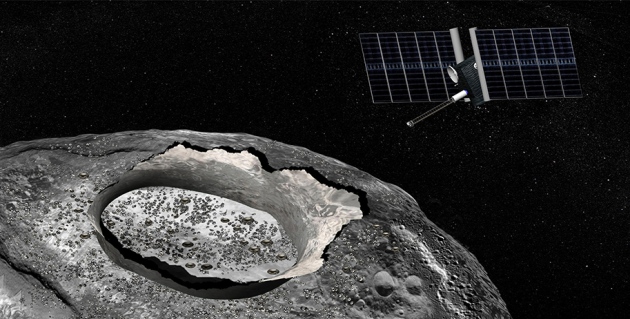
Psyche is scheduled to launch in October 2023, reaching the asteroid in 2030.
16 Psyche was found in 1852 by Italian astronomer Annibale de Gasparis, who named it after the Greek mythological figure Psyche.
Major components of the Psyche mission include:
The Psyche Multispectral Imager
The Multispectral Imager provides high-resolution images using filters to discriminate between 16 Psyche’s metallic and silicate constituents. The instrument consists of a pair of identical cameras designed to acquire geologic, compositional, and topographic data. The purpose of the second camera is to provide redundancy for mission-critical optical navigation. The science team is based at Arizona State University.
Psyche Gamma Ray and Neutron Spectrometer
The Gamma Ray and Neutron Spectrometer will detect, measure, and map 16 Psyche’s elemental composition. The instrument is mounted on a 2-meter (6-foot) boom to distance the sensors from background radiation created by energetic particles interacting with the spacecraft and to provide an unobstructed field of view. The science team is based at the Applied Physics Laboratory at Johns Hopkins University.
Psyche Magnetometer
The Psyche Magnetometer is designed to detect and measure the remanent magnetic field of the asteroid. It is composed of two identical high-sensitivity magnetic field sensors located at the middle and outer end of a 2-meter (6-foot) boom. The science team is based at Massachusetts Institute of Technology and the University of California Los Angeles.
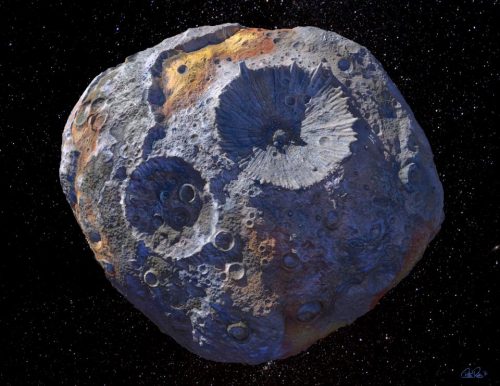
Radio Science
The Psyche mission will use the X-band radio telecommunications system to measure 16 Psyche’s gravity field to high precision. When combined with topography derived from onboard imagery, this will provide information on the interior structure of Psyche. The science team is based at MIT and JPL.
It was also noted during the teleconference that images from Psyche will be made available to the public immediately, perhaps even within one half hour!
These two new missions will help scientists continue to unravel the mysteries of how our Solar System formed and evolved into the incredible array of worlds that we see today.
“These are true missions of discovery that integrate into NASA’s larger strategy of investigating how the Solar System formed and evolved,” said NASA’s Planetary Science Director Jim Green. “We’ve explored terrestrial planets, gas giants, and a range of other bodies orbiting the Sun. Lucy will observe primitive remnants from farther out in the Solar System, while Psyche will directly observe the interior of a planetary body. These additional pieces of the puzzle will help us understand how the Sun and its family of planets formed, changed over time, and became places where life could develop and be sustained – and what the future may hold.”
While these missions are exciting in themselves, the news was disappointing for those who wanted one of the two Venus missions to be selected. The Deep Atmosphere Venus Investigation of Noble gases, Chemistry, and Imaging (DAVINCI) mission would have studied the chemical composition of Venus’ atmosphere during a 63-minute descent. The Venus Emissivity, Radio Science, InSAR, Topography, and Spectroscopy mission (VERITAS) mission would have produced global, high-resolution topography and imaging of Venus’ surface and produced the first maps of deformation and global surface composition.
“What can I say? It’s deeply disappointing,” said Robert Grimm, a planetary scientist at SwRI, in Nature. “We want to make sure NASA continues to support high-level Venus activities.”
A new Venus mission is still possible as a part of NASA’s upcoming New Frontiers missions, however, which has a per-mission budget of up to $850 million. The Discovery Program missions are capped at $450 million.
The other fifth mission proposal not selected for actual launch was the Near Earth Object Camera (NEOCam) mission, which would discover 10 times more near-Earth objects than all NEOs discovered to date. However, the research development for such a mission did receive extra funding for one additional year.
Previous Discovery Program missions have included the MESSENGER mission to Mercury, the Dawn mission to asteroids Vesta and Ceres, and the InSight Mars lander, scheduled to launch in May 2018.
More information about the Discovery Program is available here.
Be sure to “LIKE” AmericaSpace on Facebook and follow us on Instagram & Twitter!




